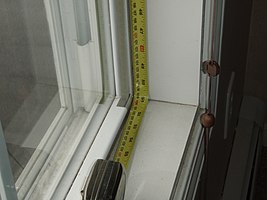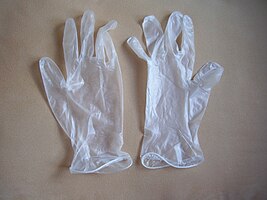PVC (3)
PVC (Polyvinyl Chloride) is a plastic often used in window frames and is captured as PVC (3) in WikiWaste.

Polyvinyl Chloride (PVC (3)) is one of the most widely used polymers in the world. Due to its versatile nature, PVC (3) is used extensively across a broad range of industrial, technical and everyday applications including widespread use in building, transport, packaging, electrical/electronic and healthcare applications[1].
PVC is a very durable and long lasting material which can be used in a variety of applications (either rigid or flexible), including window frames, drainage pipes, water service pipes, medical devices, blood storage bags, cable and wire insulation, flooring, stationary, automotive interiors and seat coverings, fashion and footwear, packaging, cling film, credit cards, vinyl records, synthetic leather and coated fabrics[1].
The first patent for a polymerisation process to manufacture PVC was granted to German inventor Friedrich Klatte in 1913 and PVC has been in commercial production since 1933. The material now accounts for about 20% of all plastic manufactured world-wide, second only to polyethlene (PET (1))[1].
PVC (3) is not recyclable in normal kerbside collection systems.
Properties
- Versatility, ease of blending, strength, toughness
Applications
- Stretch wrap for non-food items, sometimes blister packaging. Non-packaging uses include electrical cable insulation, uPVC window frames and doors, rigid piping and vinyl records.



![Table mats[2]](/images/thumb/5/5c/Table_mat.jpg/200px-Table_mat.jpg)
![10mm PVC Cable sleeving[3]](/images/thumb/6/62/Cable_sleeving.jpg/200px-Cable_sleeving.jpg)